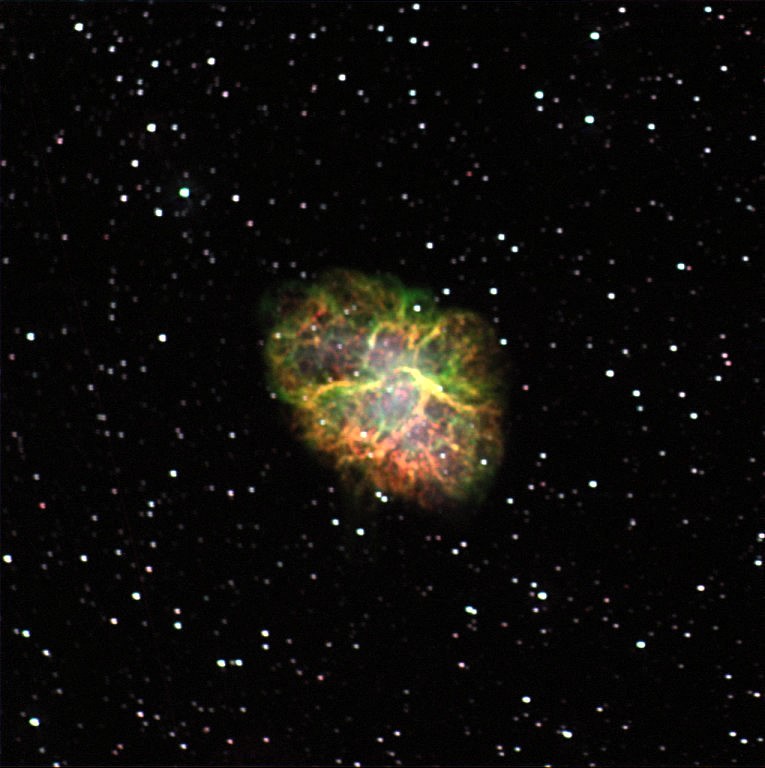In the year 1054, Chinese astronomers reported a "guest star" that rapidly
grew in brightness. Within a few days of its discovery, it was brighter than
the full Moon, and remained visible in the daytime skies for months.
What they saw was a supernova - the spectacular demise of a star many
times more massive than our Sun. Such stars explode when they run out of
nuclear fuel. The cataclysmic explosion spews heavy elements into space,
which later can be incorporated into new stars and planetary systems.
Most of the carbon, oxygen, calcium, iron, and other elements that make up
our world (and us) were produced in the cores of long-dead stars, like the
1054 supernova but billions of years earlier. These elements slowly
made their way through
the galaxy to become part of our solar system.
The Crab Nebula is all that remains of the supernova of 1054.
It is an expanding mass of glowing hydrogen and helium gas, but with
significant amounts of heavy elements. Visible through binoculars as a
faint smudge at the tip of one of the horns of Taurus, CCD imaging reveals
knotted filaments as well as the remnant core of the star within the bright
bluish central patch. This nebula lies about 6300 light years from Earth.
